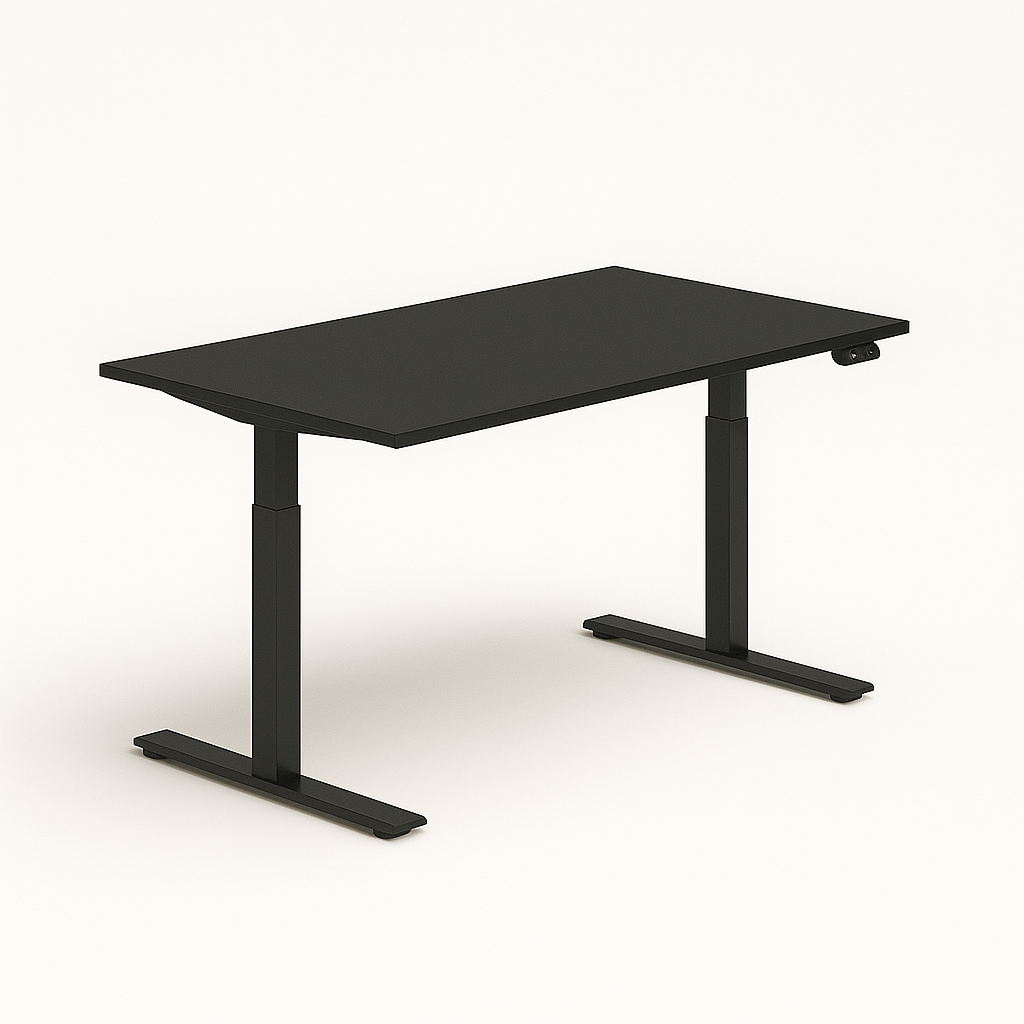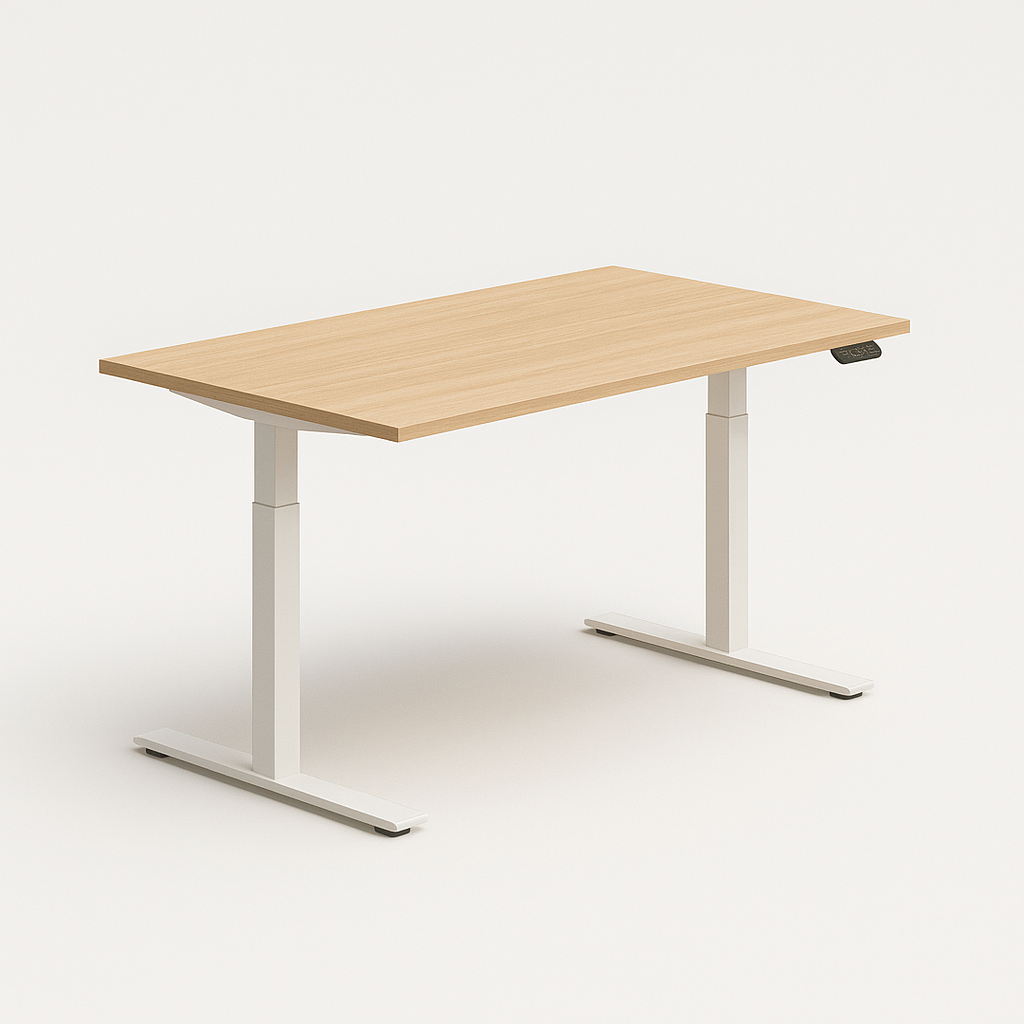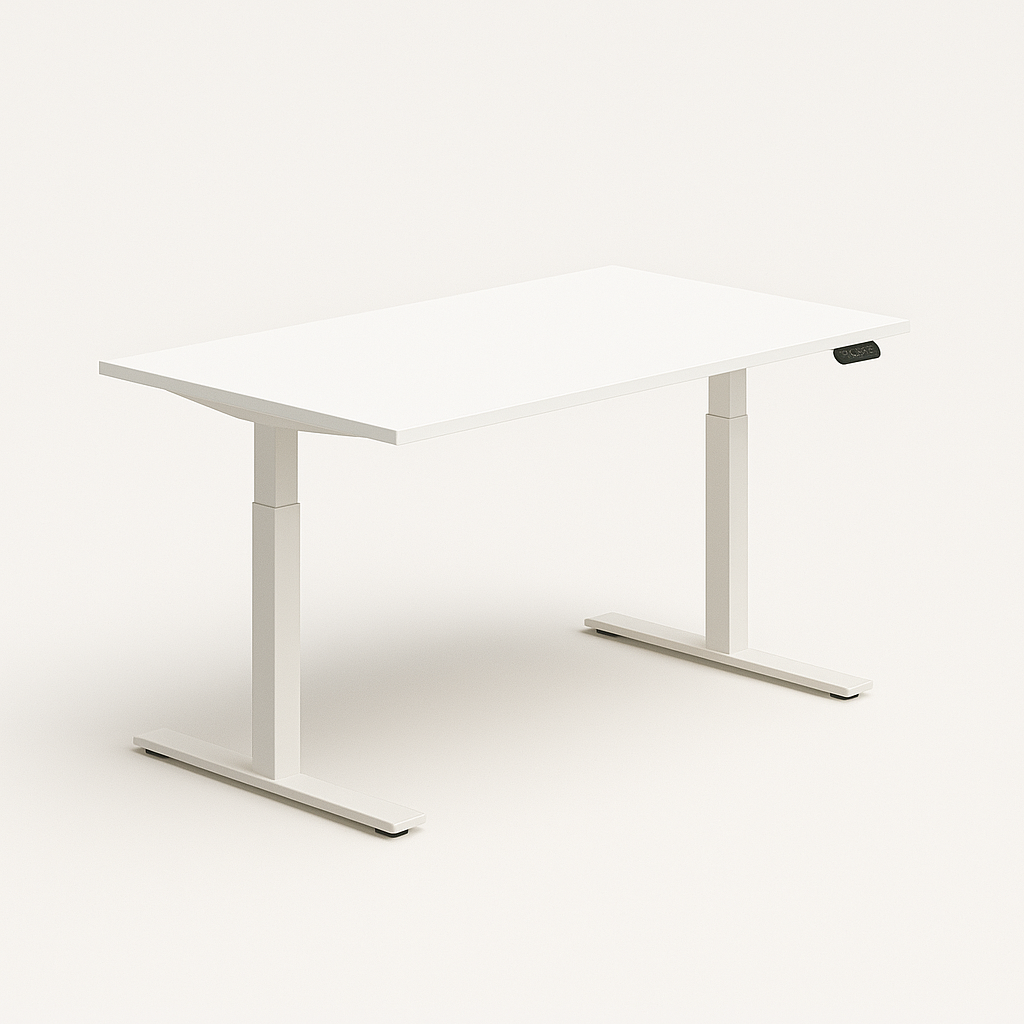Learn about the most common mistakes people make when transitioning to a standing desk and how to avoid them.
5 Common Standing Desk Mistakes and How to Avoid Them
Investing in a standing desk is a smart move for your health and productivity, but many users unknowingly make critical mistakes that can lead to discomfort, fatigue, and even injury. After analyzing hundreds of workplace assessments, we've identified the top 5 mistakes that sabotage standing desk success—and more importantly, how to avoid them.
Mistake #1: Going from 0 to 100 Too Quickly
The Problem
The most common mistake new standing desk users make is attempting to stand for their entire 8-hour workday immediately. This "all-or-nothing" approach often leads to:
**Severe leg and foot fatigue** within hoursLower back pain and muscle strainSwollen feet and poor circulationQuick abandonment of the standing desk altogetherThe Solution: Gradual Transition Strategy
Week 1-2: The Foundation Phase
Start with **15-30 minutes of standing per hour**Focus on phone calls and reading tasks while standingUse a timer to remind yourself to alternate positionsPay attention to your body's comfort signalsWeek 3-4: Building Endurance
Increase to **45 minutes of standing per hour**Begin incorporating more computer tasks while standingAdd gentle movement and stretchingTrack your energy levels throughout the dayWeek 5+: Finding Your Optimal Balance
Aim for **50-70% standing time** during your workdayCustomize your routine based on task typesListen to your body and adjust as needed**Most users find their sweet spot at 60% standing, 40% sitting**Pro Tips for Success
Use your desk's memory settings to make transitions effortlessSchedule specific tasks for standing vs. sitting periodsKeep a water bottle nearby to encourage movementMistake #2: Incorrect Monitor Height and Positioning
The Problem
Poor monitor positioning causes more issues than the desk height itself. Common errors include:
Monitor too low: Leading to neck strain and forward head postureScreen too close or too far: Causing eye strain and shoulder tensionMultiple monitors at different heights: Creating neck rotation and asymmetryGlare and lighting issues: Forcing unnatural posturesThe Solution: Perfect Monitor Setup
Optimal Height Guidelines
**Top of the monitor at eye level** when standing tallScreen tilted 10-20 degrees backwardDistance of 20-24 inches from your eyesSlightly lower positioning acceptable for larger monitors (24"+)Multi-Monitor Best Practices
Primary monitor directly in front of you**Secondary monitors angled 15-30 degrees maximum**All monitors at consistent height levelsUse monitor arms for easy adjustmentLighting Considerations
Position monitors perpendicular to windows**Use bias lighting** behind monitors to reduce eye strainAdjust screen brightness to match room lightingConsider anti-glare screens in bright environmentsQuick Check Method
Stand at your desk and look straight ahead. Your gaze should naturally fall on the top third of your monitor without tilting your head up or down.
Mistake #3: Ignoring Foot and Leg Support
The Problem
Standing on hard surfaces without proper support leads to:
**Foot and leg fatigue** within 30-60 minutesPoor circulation and swellingCompensation patterns affecting postureIncreased risk of varicose veins over timeThe Solution: Comprehensive Support System
Anti-Fatigue Mat Selection
**3/4 inch thickness minimum** for optimal cushioningBeveled edges to prevent trippingNon-slip bottom surface for safetyEasy-to-clean materials for hygieneFootrest and Movement Options
Adjustable footrest for position variety**Balance board** for active standingFoot rails or foot bars on deskSmall stool for occasional foot elevationProper Footwear
Supportive shoes with good arch support**Avoid high heels** or completely flat shoesConsider compression socks for circulationKeep comfortable shoes at your desk for standing periodsMovement Integration
Shift weight from foot to foot every 10-15 minutes**Calf raises** during phone callsGentle marching in placeUse a balance board for core engagementMistake #4: Poor Wrist and Arm Positioning
The Problem
Incorrect arm positioning while standing creates:
**Wrist strain** and repetitive stress injuriesShoulder tension and neck painReduced typing efficiency and accuracyIncreased risk of carpal tunnel syndromeThe Solution: Ergonomic Arm and Wrist Setup
Ideal Arm Positioning
**Elbows at 90-degree angles** when typingUpper arms relaxed and close to your bodyShoulders level and not hunchedWrists in neutral position, not bent up or downKeyboard and Mouse Setup
Keyboard at elbow height or slightly lower**Keyboard tray** may be necessary for proper heightMouse at same level as keyboardUse a wrist rest for support during breaks, not while typingStanding-Specific Adjustments
Keyboard may need to be higher than sitting position**Negative tilt keyboard** can improve wrist alignmentConsider a separate number pad to keep mouse closerUse keyboard shortcuts to reduce mouse usageWarning Signs to Watch For
Tingling or numbness in hands or fingers**Wrist or forearm pain** during or after workShoulder tension or neck stiffnessDecreased grip strength or dexterityMistake #5: Maintaining Static Positions
The Problem
The biggest irony of standing desks is that static standing can be just as harmful as static sitting:
**Muscle fatigue** from maintaining fixed positionsReduced blood circulationJoint stiffness and discomfortDecreased cognitive performance over timeThe Solution: Dynamic Movement Integration
Micro-Movement Strategies
**Weight shifts** every 10-15 minutesGentle swaying or rocking motionsAnkle circles and calf raisesHip rotations and gentle stretchesPosition Variation Techniques
Use a tall stool for "perching" positions**Lean against the desk** occasionallyStep side to side during phone callsUse a balance board or standing mat with contoursScheduled Movement Breaks
Walk for 2-3 minutes every hour**Stretch routine** every 2 hoursClimbing stairs or brief walksDesk-based exercises during breaksTask-Based Movement
Stand for phone calls and meetings**Sit for detailed computer work**Walk while brainstorming or reviewing documentsUse standing for administrative tasksCreating Your Movement Routine
Hourly Reminders
Set phone or computer alerts**Use apps** that track standing timeVisual cues like sticky notesPartner with colleagues for accountabilityMovement Menu
Create a list of 10-15 simple movements you can do at your desk:
Calf raises (15 reps)**Shoulder blade squeezes** (10 reps)Neck rotations (5 each direction)Hip circles (10 each direction)Marching in place (30 seconds)Additional Success Strategies
Listen to Your Body
**Fatigue is normal** during the transition periodSharp pain is never normal - adjust immediatelyEnergy levels should improve after 2-3 weeksIndividual needs vary - find what works for youEnvironmental Optimization
Ensure adequate lighting to prevent squinting**Control temperature** to avoid discomfortReduce distractions that cause poor postureKeep water and healthy snacks nearbyProfessional Support
Consider a workplace ergonomics assessment**Consult with a physical therapist** if experiencing painJoin online communities for tips and supportRegular check-ins with occupational health professionalsMeasuring Your Success
Positive Indicators
**Increased energy** throughout the dayReduced back and neck painImproved posture awarenessBetter focus and productivityWarning Signs
Persistent pain or discomfort**Extreme fatigue** that doesn't improveSwelling in feet or legsDecreased work performanceConclusion: Your Path to Standing Desk Success
Avoiding these common mistakes will dramatically improve your standing desk experience and help you reap the full health and productivity benefits. Remember, the goal isn't to stand all day—it's to find the right balance of sitting, standing, and moving that works for your body and your work.
The key to long-term success is patience with the transition process, attention to proper ergonomics, and consistent movement throughout your day. Start slowly, make gradual adjustments, and listen to your body's feedback.
Ready to optimize your standing desk setup? Explore Fittrock's ergonomic accessories and premium standing desks designed to help you avoid these common pitfalls from day one.
---
Anita Patel is a certified ergonomics specialist and workplace wellness consultant with over 12 years of experience helping professionals transition to healthier work environments. She holds certifications from the Board of Certification in Professional Ergonomics.


